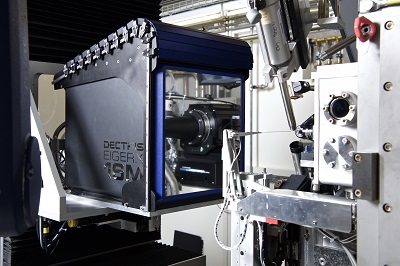Determining the structures of complex biological molecules
 In the past decade there have been huge improvements in
synchrotron sources, instrumentation at macromolecular crystallography (MX)
beamlines, X-ray detectors, and data-processing and structure-determination
software. These have led to an unprecedented increase in the number of
structures determined.
In the past decade there have been huge improvements in
synchrotron sources, instrumentation at macromolecular crystallography (MX)
beamlines, X-ray detectors, and data-processing and structure-determination
software. These have led to an unprecedented increase in the number of
structures determined.
These developments have also called for a revision of data-collection practice
for single crystals. Hybrid photon-counting (HPC) pixel-array detectors have
revolutionized data collection, both in terms of speed and in terms of quality.
They offer several novel features including single-photon sensitivity, a sharp
point-spread function of one pixel, millisecond and noise-free readout, and a
high dynamic range. HPC pixel-array detectors can enable shutterless data
collection, improving the data quality and reducing the data-acquisition time.
A recent paper by the MX group at the Swiss Light Source, published in Acta Cryst. D [Casanas et al., (2016), Acta Cryst. D72,
1036-1048; doi:10.1107/S2059798316012304]
describes the best way of collecting macromolecular diffraction data with an
EIGER HPC detector. In collaboration with DECTRIS, the group has integrated a
DECTRIS EIGER and shown that it can be used to measure higher quality data than
some earlier detectors. This has been enabled by features like the virtually
continuous sensitivity of the detector for X-rays, only interrupted by
microsecond breaks for the readout, enabling optimized data acquisition schemes
at high speed and single photon accuracy.
The EIGER detector series is considered to represent the current state of the
art of X-ray detectors for synchrotron and laboratory applications. Its
development has widened the range of applications from high resolution data
collection to experimental phasing and serial crystallography and allowed crystallographers
to determine structures of more complex biological molecules, and this in turn
can increase our understanding of their role in health and disease processes.


